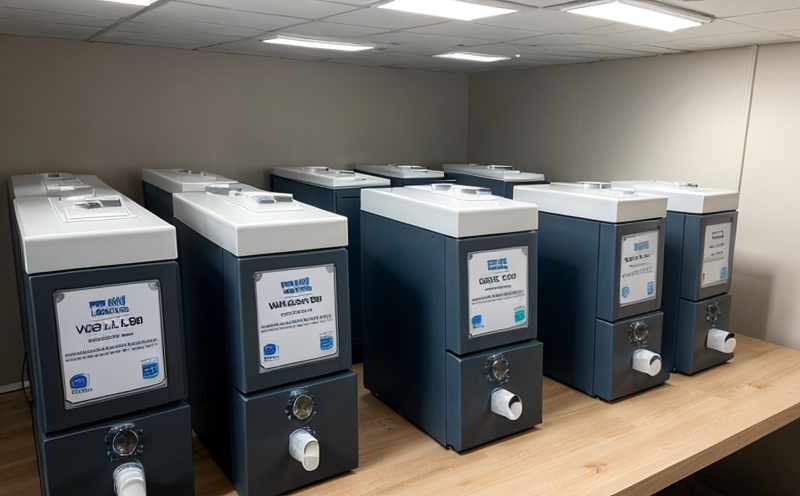Formaldehyde emission control testing for protective clothing
The need to ensure worker safety and compliance with international standards has never been more critical. Formaldehyde is a common chemical used in the production of textiles, particularly in protective clothing. However, excessive formaldehyde can pose health risks when it escapes into the environment or during use. Therefore, conducting emission control testing for formaldehyde is essential.
Our service specializes in providing robust and reliable testing methods to measure formaldehyde emissions from protective clothing effectively. This includes ensuring that the levels of formaldehyde are within acceptable limits as specified by international standards such as ISO 17456-2:2018. By adhering to these stringent guidelines, we help our clients maintain compliance with regulations and protect workers' health.
The testing process involves several critical steps that ensure accurate results every time. The first step is to prepare the samples correctly according to ISO 17456-2:2018 specifications. This ensures consistency in how we measure emissions from different batches of protective clothing. Once prepared, the samples undergo rigorous testing using advanced instrumentation designed specifically for detecting even trace amounts of formaldehyde.
After the test results are obtained, our team meticulously analyzes them and compares them against established standards like ISO 17456-2:2018 to determine compliance levels. Compliance with these standards not only ensures safety but also builds trust among consumers who value quality assurance above all else.
To further emphasize the importance of this service, let’s take a look at some real-world applications where proper formaldehyde emission control testing plays a vital role:
- Manufacturers seeking to meet regulatory requirements imposed by countries such as China and Europe.
- Companies looking to improve their product quality through continuous improvement practices based on test results.
- R&D teams aiming to innovate safer products without compromising on performance or comfort.
Applied Standards
| Standard Name | Description |
|---|---|
| ISO 17456-2:2018 | Method for determining the formaldehyde content in textile materials by emission from textiles. |
| ASTM D3966 | Standard test method for determination of total volatile organic compounds (TVOC) and individual aromatic hydrocarbons emitted into air from indoor decorative building materials, including carpets, carpet backings, wall coverings, resilient floor coverings, wood floors, ceiling tiles, and interior insulation. |
Industry Applications
- Protective clothing manufacturers ensuring compliance with international standards.
- R&D teams developing safer and more efficient products.
- Quality assurance departments validating the quality of their products before release into market.
| Industry Sector | Description |
|---|---|
| Textile Manufacturing | Incorporating advanced emission control measures into their production processes to meet regulatory requirements. |
| Retail & Wholesale | Selling products that have been independently verified as meeting high safety standards. |
Eurolab Advantages
At Eurolab, we pride ourselves on offering comprehensive services that go beyond just testing. Our team of experts uses cutting-edge technology and methodologies to ensure precise measurements every time. We understand the importance of meeting deadlines, so our turnaround times are fast without sacrificing accuracy or reliability.
We offer flexibility in terms of sample types and sizes, ensuring we can accommodate various needs. Additionally, our extensive network allows us to provide services globally, making it easier for clients worldwide to access our expertise.





